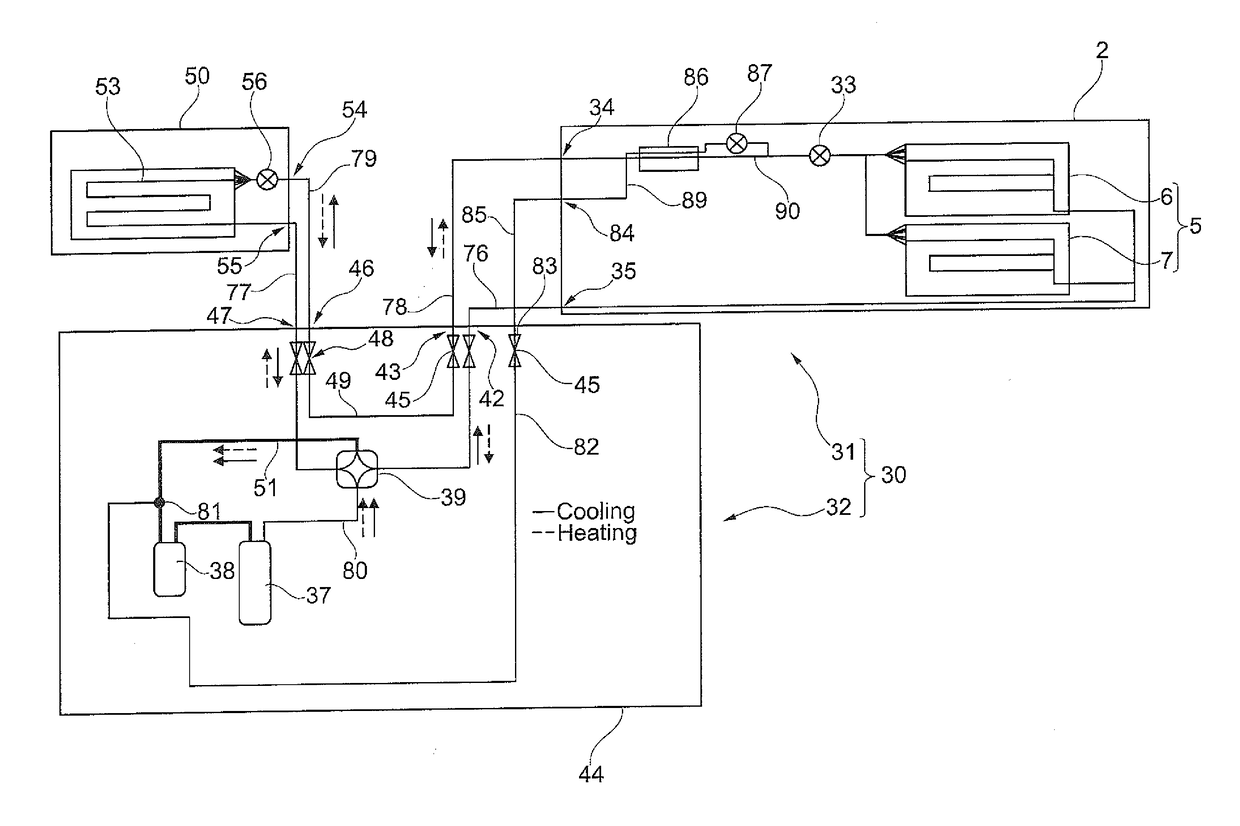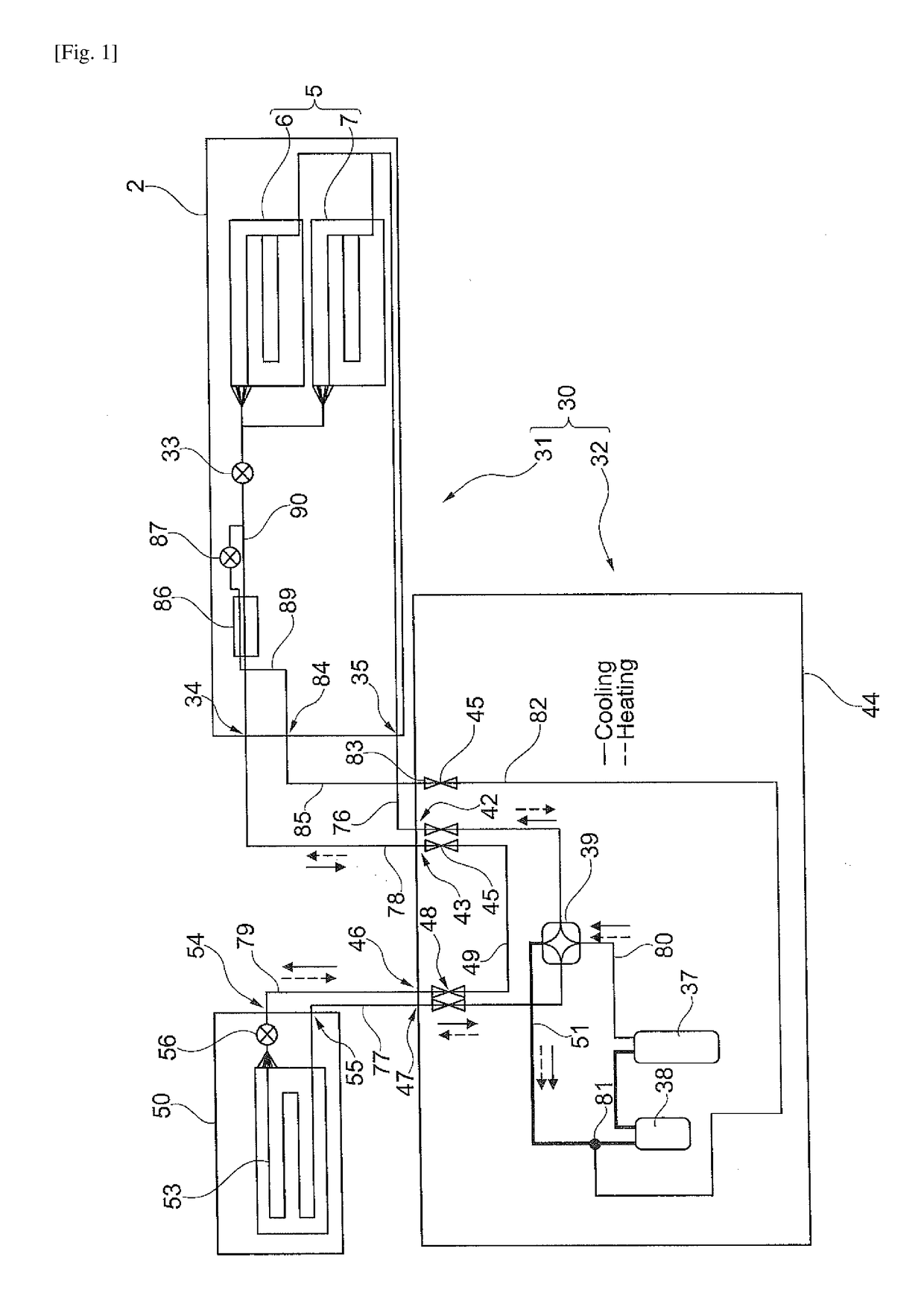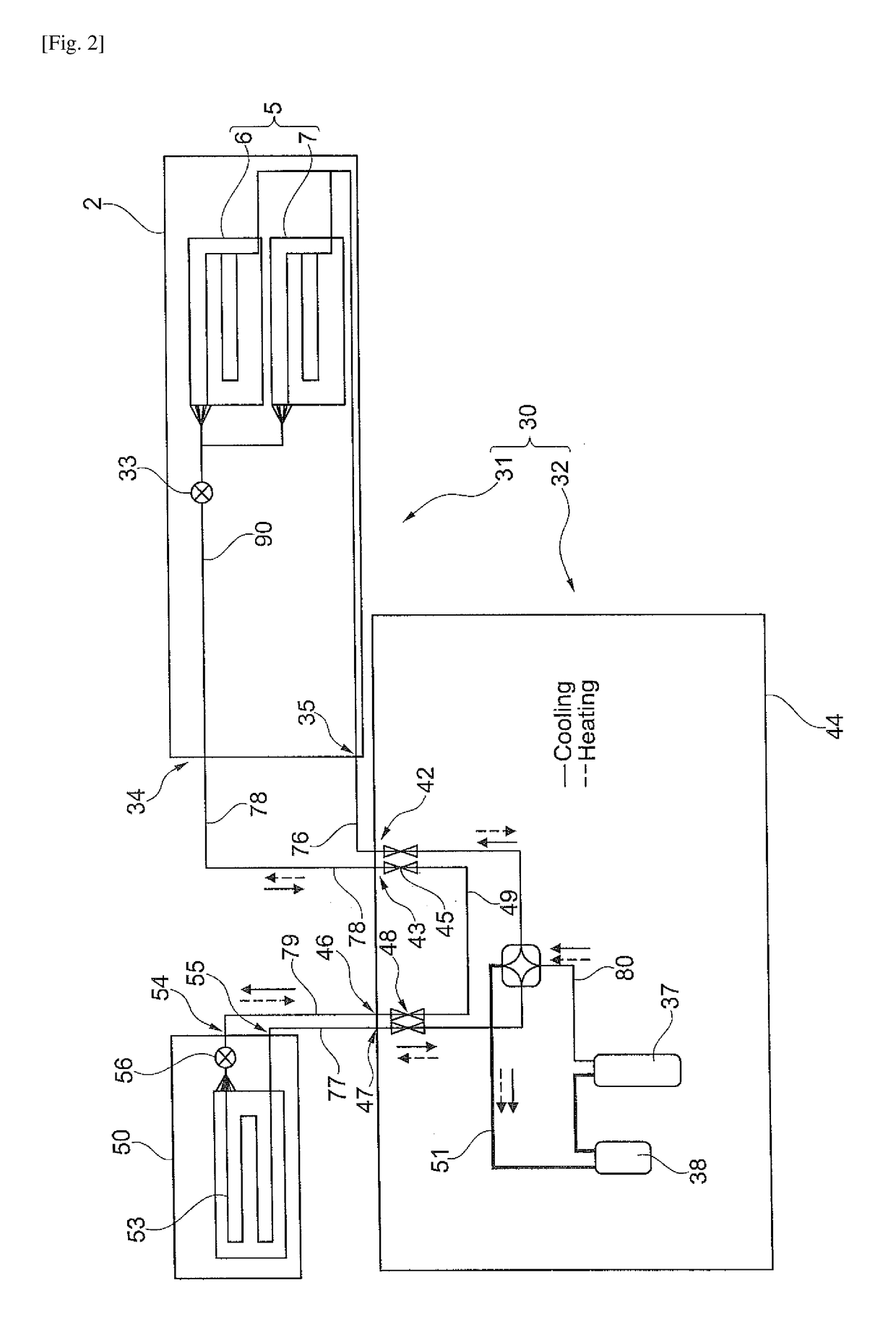Air conditioner
a technology for air conditioners and fans, applied in the field of air conditioners, can solve problems such as perceived disadvantages, and achieve the effects of avoiding loss of heating capacity, avoiding loss of cooling capacity, and increasing efficiency
- Summary
- Abstract
- Description
- Claims
- Application Information
AI Technical Summary
Benefits of technology
Problems solved by technology
Method used
Image
Examples
Embodiment Construction
[0018]FIG. 2 shows the circuit diagram of an air conditioner. The air-conditioner has a heat source unit 30 comprising a heat exchanger unit 31 and a compressor unit 32.
[0019]The heat exchanger unit 31 comprises a heat exchanger 5 (first heat exchanger) which consists of an upper heat exchanger element 6 and a lower heat exchanger element 7 connected in parallel. The heat exchanger unit 31 further comprises the main expansion valve 33 of the refrigerant circuit.
[0020]The heat exchanger unit 31 comprises a casing 2 (first casing) being configured for connection to an outside air duct of an air conditioner. In particular, the heat exchanger unit is configured as an “outdoor” unit of an air conditioner which is, however, disposed inside particularly within the ceiling of a building. Hence, a first connection is provided at the casing 2 for connection to an air duct communicating the heat exchanger unit 31 with the outside of the building and so as to enable taking of outdoor air into t...
PUM
 Login to View More
Login to View More Abstract
Description
Claims
Application Information
 Login to View More
Login to View More - R&D
- Intellectual Property
- Life Sciences
- Materials
- Tech Scout
- Unparalleled Data Quality
- Higher Quality Content
- 60% Fewer Hallucinations
Browse by: Latest US Patents, China's latest patents, Technical Efficacy Thesaurus, Application Domain, Technology Topic, Popular Technical Reports.
© 2025 PatSnap. All rights reserved.Legal|Privacy policy|Modern Slavery Act Transparency Statement|Sitemap|About US| Contact US: help@patsnap.com



